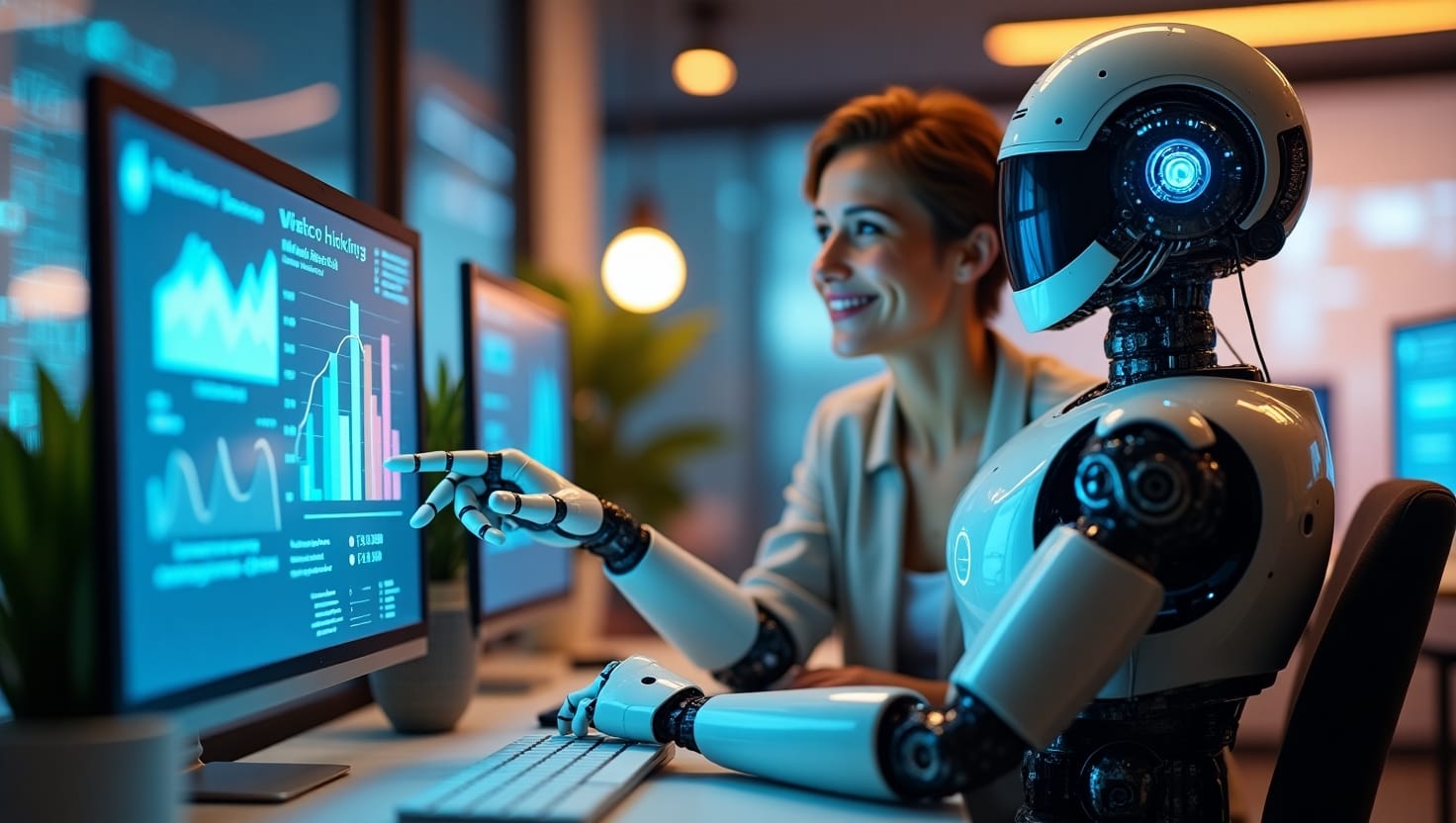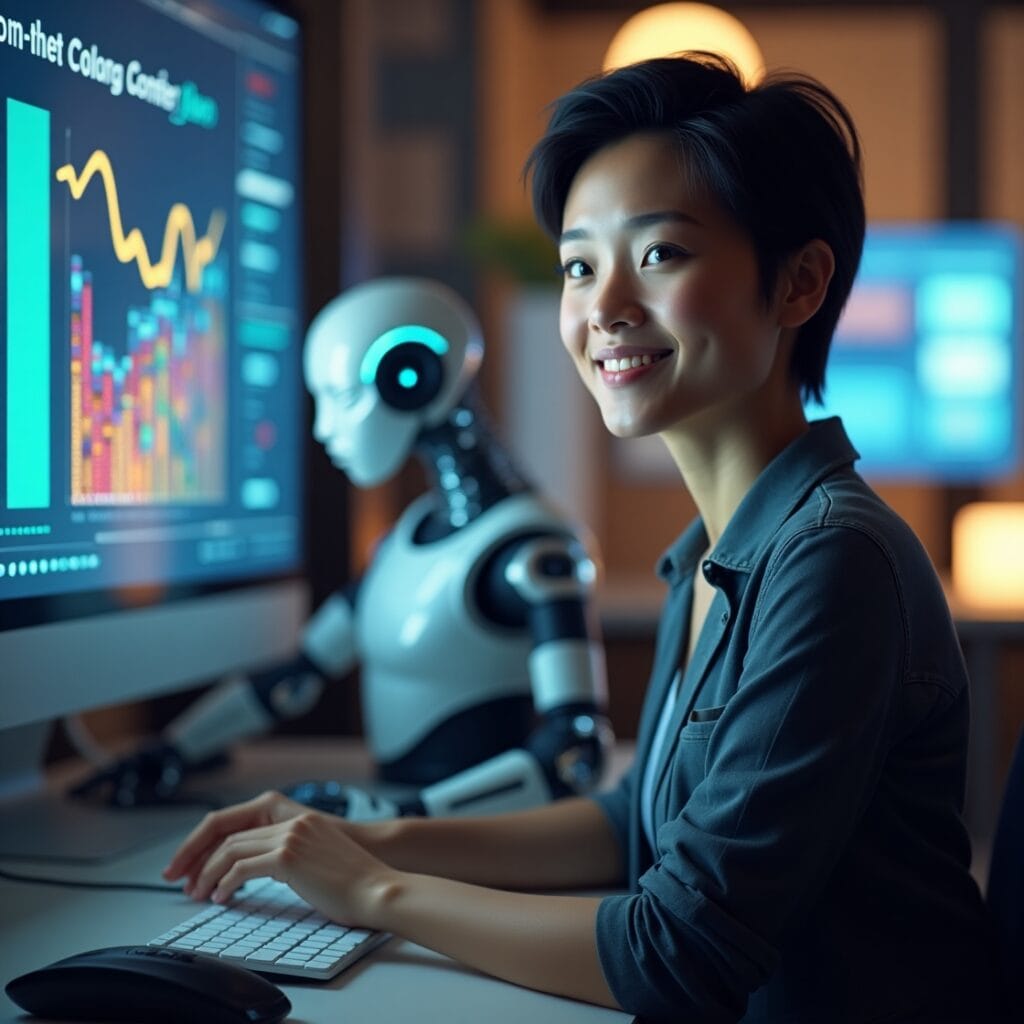
Introduction: AI Is No Longer a Tool—It’s a Teammate
As artificial intelligence continues to evolve, the conversation is shifting from replacement to augmentation. The future of technology is not about machines taking over human jobs, but rather about humans and machines working together to unlock greater capabilities.
Welcome to the era of human-machine collaboration, where AI is becoming more of a partner than a tool—thanks to advancements in natural interfaces, multimodal inputs, and adaptive intelligence.
This is more than a technological upgrade—it’s a revolution in how we think, work, create, and communicate.
What Is Human-Machine Collaboration?
Human-machine collaboration refers to a system where AI augments human decision-making, creativity, and productivity, rather than replacing it. In this paradigm, AI systems learn from us, with us, and alongside us.
Unlike the rigid automation of the past, modern AI is becoming adaptive, context-aware, and conversational—allowing more natural interaction between humans and machines.
1. AI as Your Creative Partner, Not a Competitor
In 2025, AI isn’t here to steal your job — it’s here to supercharge your imagination. Tools like AI-driven design assistants, music composition software, and story generators can help you brainstorm ideas faster than ever. Instead of fearing automation, think of AI as a 24/7 creative collaborator who never gets tired and can instantly suggest fresh concepts you might never have considered.
2. Data Analysis Without the Data Overload
Massive datasets used to overwhelm human teams, but AI can now filter, clean, and interpret information in seconds. Whether it’s predicting customer trends, analyzing medical scans, or optimizing supply chains, AI handles the heavy lifting while you focus on decision-making. The human role shifts from doing the math to asking the right questions.
3. AI for Skill Amplification
AI in 2025 acts like a personal skills amplifier. For example:
- Doctors use AI to suggest treatment options, improving accuracy.
- Writers get AI-powered editing that understands tone and audience.
- Engineers design faster with AI-generated prototypes.
By merging your expertise with AI’s capabilities, you get the best of both worlds — human judgment and machine precision.
4. Smarter Teamwork Between Humans and Bots
Many workplaces now integrate AI teammates into project management systems. These AI agents schedule tasks, flag potential risks, and even help mediate conflicts by offering data-backed solutions. This allows human teams to stay focused on strategy and relationship-building, while AI keeps operations running smoothly.
5. Continuous Learning Through AI Coaching
Instead of replacing training programs, AI is now a personalized coach for employees. In 2025, you can have an AI mentor that:
- Gives real-time feedback during work.
- Tracks your skill development over months.
- Suggests micro-learning modules based on your career goals.
This keeps workers future-ready as technology evolves.
6. AI as a Bridge, Not a Barrier
When used wisely, AI helps humans connect better. AI-powered translation breaks language barriers in global teams, sentiment analysis helps managers understand employee morale, and virtual assistants make communication faster. The goal is to let AI handle logistics and routine tasks, freeing humans to focus on empathy, creativity, and leadership — the skills machines can’t truly replicate.

Core Pillars of This New Collaboration
1. Natural Interfaces (NLP + Voice + Vision)
AI systems are being designed to understand humans in human ways—through language, tone, gestures, and images.
- Natural Language Processing (NLP): Tools like ChatGPT, Gemini, and Claude can process complex human language.
- Voice Assistants: Devices like Amazon Alexa and Apple’s Siri are becoming more responsive and emotionally aware.
- Computer Vision: AI can now read facial expressions, body language, and even emotions.
These improvements make AI easier to talk to, easier to trust, and more intuitive to use.
2. Multimodal Inputs = One Unified Brain
We are entering the multimodal era, where AI can process text, images, audio, and video—all at once. This enables more complex and creative collaboration.
Example:
- A designer can speak a command, show a sketch, and receive a rendered image—all in real time.
- Doctors can feed patient data, MRI scans, and genetic profiles into one model for better diagnosis.
This ability to understand context across multiple inputs makes AI more aligned with human thinking.
3. Adaptive Intelligence: Learning on the Job
Unlike earlier static systems, modern AI tools adapt based on user behavior and preferences.
- Recommendation engines improve as they learn your interests.
- Coding assistants learn from your development style.
- AI copilots adjust based on your past decisions, goals, and tone.
This is intelligence that learns with you, making the machine more effective the longer you use it.
Human-Machine Collaboration: A Competitive Advantage in 2025
In the fast-paced digital economy, Human-Machine Collaboration has become the ultimate competitive advantage. Companies that integrate AI into their workflows aren’t just improving efficiency — they’re redefining what’s possible. By pairing human creativity with AI’s processing power, organizations can develop products faster, predict market shifts with greater accuracy, and deliver personalized experiences that keep customers loyal.
Bridging Skill Gaps Through AI
One of the overlooked benefits of Human-Machine Collaboration is its ability to close skill gaps. AI-powered learning tools can coach employees in real time, offering tips, tutorials, and feedback tailored to their performance. This means workers can learn as they work, rather than stepping away for lengthy training sessions. The result? A more skilled workforce without sacrificing productivity.
Human Oversight in a Machine-Driven World
While machines can make millions of calculations in seconds, they still lack human values and ethics. In Human-Machine Collaboration, humans play the role of ethical guardians — reviewing AI-generated decisions, correcting biases, and ensuring technology is used for the greater good. This balance protects both business integrity and public trust.
Collaboration That Scales Globally
In 2025, Human-Machine Collaboration is also helping teams work seamlessly across borders. AI-powered translation, virtual meeting assistants, and cross-time-zone task scheduling have made global teamwork as natural as local collaboration. This is especially powerful for multinational companies and startups with remote-first cultures.
From Assistance to Autonomy
Earlier, AI mostly acted as an assistant — responding to commands and processing tasks. Now, in advanced Human-Machine Collaboration setups, AI can act autonomously on predefined goals. Humans provide the vision and parameters, and AI takes on execution, adapting in real time. This shift frees up human workers to focus on high-level thinking and innovation.
The Human Touch Will Always Matter
No matter how advanced AI becomes, Human-Machine Collaboration reminds us that machines can’t replace emotional intelligence, moral reasoning, or human connection. The future will belong to those who can merge technological expertise with human empathy, creating solutions that are both powerful and people-centered.
AI as the Problem-Solving Partner
In modern workplaces, Human-Machine Collaboration means using AI to quickly identify problems, suggest multiple solutions, and forecast the outcome of each choice. This enables decision-makers to avoid costly mistakes and pivot strategies in real time. Instead of replacing human leaders, AI acts as a risk-reducing partner.
Personalized Productivity with Human-Machine Collaboration
One of the biggest benefits of Human-Machine Collaboration is personalization. AI tools can analyze your work habits, suggest better time management strategies, and even automate your least favorite tasks. This not only boosts productivity but also reduces burnout, allowing humans to focus on meaningful, high-value work.
The Role of Empathy in Human-Machine Collaboration
While AI handles facts, humans bring feelings. Successful Human-Machine Collaboration acknowledges that empathy — the ability to understand and connect with others — is irreplaceable. Businesses that pair AI efficiency with human emotional intelligence will deliver superior customer experiences and build stronger brand loyalty.
A Shared Learning Ecosystem
In 2025, Human-Machine Collaboration is evolving into a two-way learning process. AI learns from human decisions, improving its algorithms, while humans learn from AI insights, sharpening their analytical skills. This constant feedback loop keeps both parties — human and machine — growing smarter together.
Ethics as the Cornerstone
The future of Human-Machine Collaboration depends on trust, and trust depends on ethics. Companies are now creating AI ethics boards to oversee how algorithms are trained, ensuring that collaboration is fair, unbiased, and transparent. This safeguards both user rights and brand reputation.
Real-World Applications of Human-AI Collaboration
| Industry | Application |
|---|---|
| 💼 Business | AI copilots for meetings, summarizing emails, generating reports |
| 🏥 Healthcare | Human doctors + AI diagnosis = higher accuracy & speed |
| 🎨 Design & Media | Artists use AI to generate concepts, variations, and edits |
| 👨🏫 Education | Teachers collaborate with AI tutors to personalize student learning |
| 👷 Manufacturing | Robots work side-by-side with human workers, guided by natural input |
This shift is especially visible in platforms like Microsoft Copilot, Adobe Firefly, and Notion AI, which function as digital assistants, not autonomous agents.
Read more : Deloitte
Ethical Design: Building Trust into the System
As AI takes on a more collaborative role, transparency and trust become crucial. Companies must focus on:
- Explainable AI: Users need to understand why the AI made a suggestion.
- Privacy-first design: Collaboration should never come at the cost of data security.
- Bias reduction: AI must be trained and tested to minimize discriminatory outcomes.
Collaboration without consent or understanding becomes exploitation. are rapidly blurring—but in a way that enhances human freedom and productivity.
Final Thoughts
Human-machine collaboration isn’t just about building smarter machines—it’s about creating more capable humans. The goal is not for AI to replace us, but to empower us to think deeper, move faster, and solve problems previously out of reach.
As AI gets more intuitive and responsive, the real innovation will be in how we choose to collaborate with it.
The future isn’t AI vs. humans.
The future is AI + humans.
Want more tech breakthroughs? Visit USAtrends.tech for fresh insights every day!





